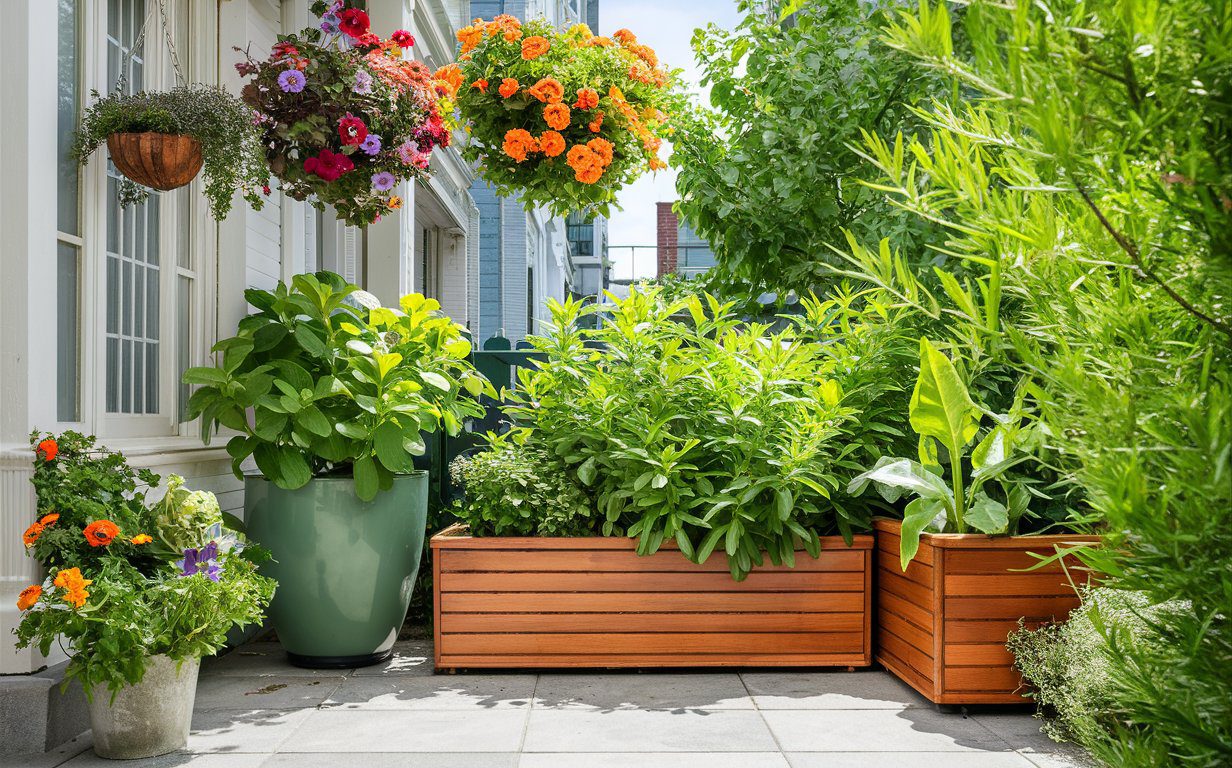The Seed of an Idea 
Imagine this: You're sitting in your small apartment, staring at the lifeless concrete jungle outside your window. Your eyes wander to the lone, sad-looking plant on your windowsill. It’s a plant you’ve managed to keep alive despite your busy schedule. Suddenly, a thought strikes you – what if you could transform this dull space into a vibrant, green haven?
The Spark: A Story from My Journey
I remember the first time I decided to start urban gardening. I was living in a tiny apartment with no balcony, just a small windowsill.One day, after a particularly stressful week at work, I found myself at a local plant shop.
The sight of all those lush, green plants calmed my mind instantly. Without thinking much, I bought a small basil plant.
That little herb was the beginning of my urban gardening journey, and it changed my life in ways I never imagined.
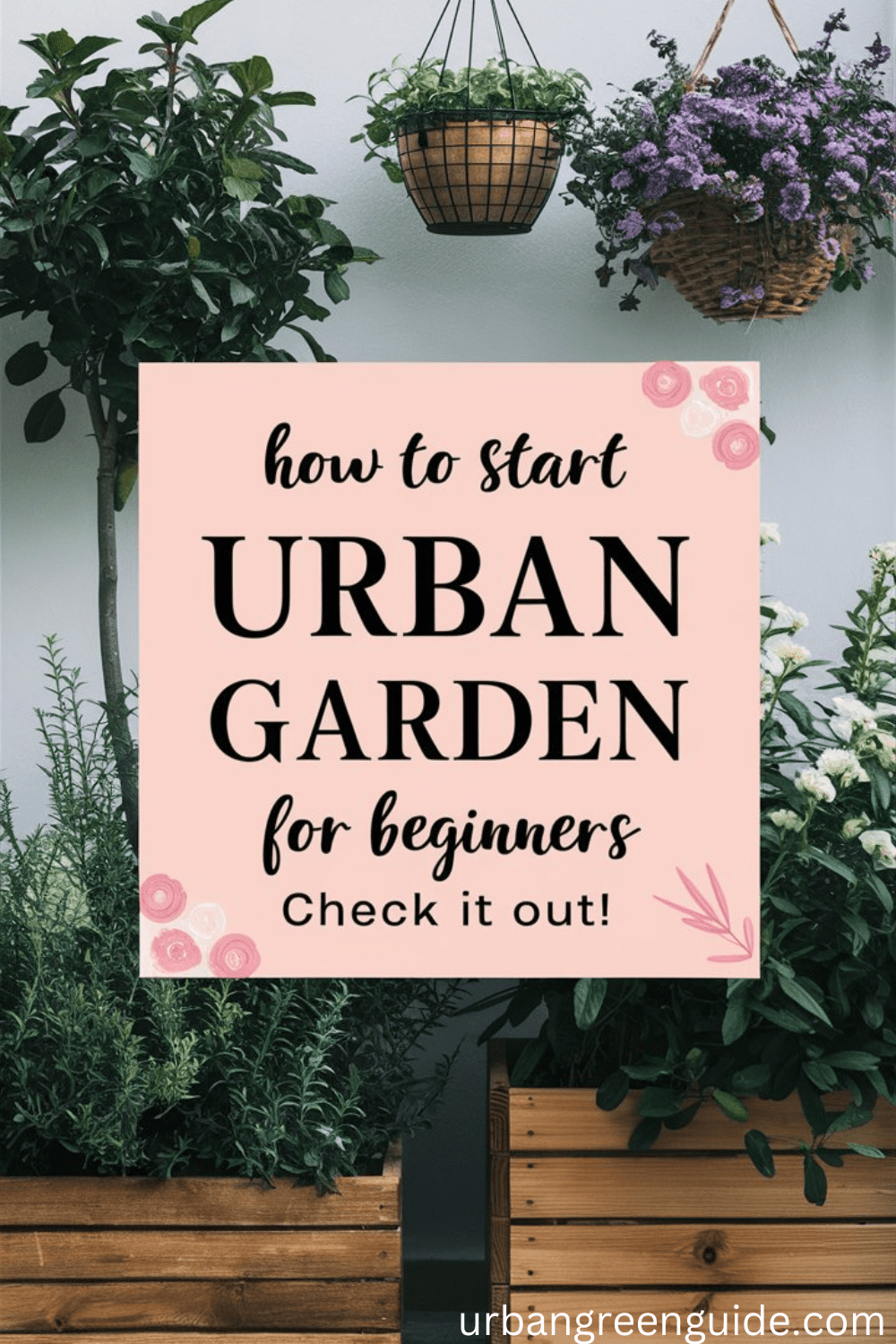
Why Your Past Growing Attempts Failed (And Why You Should Try Again)
Have you ever tried to grow a garden and ended up with a patch of dirt and disappointment? Imagine this: You excitedly plant seeds, water them diligently, and wait for the magic to happen. But instead of lush greens and vibrant blooms, you get... nothing. Just bare soil and a sinking feeling of defeat. Sounds familiar?
Don’t worry, you're not alone! Many gardeners, both newbies and seasoned pros, have faced the same frustrations.
But here's the good news: your past failures are stepping stones to future success. Let’s dive into some common reasons why your gardening attempts might have failed and why you should dust off those gloves and give it another go.
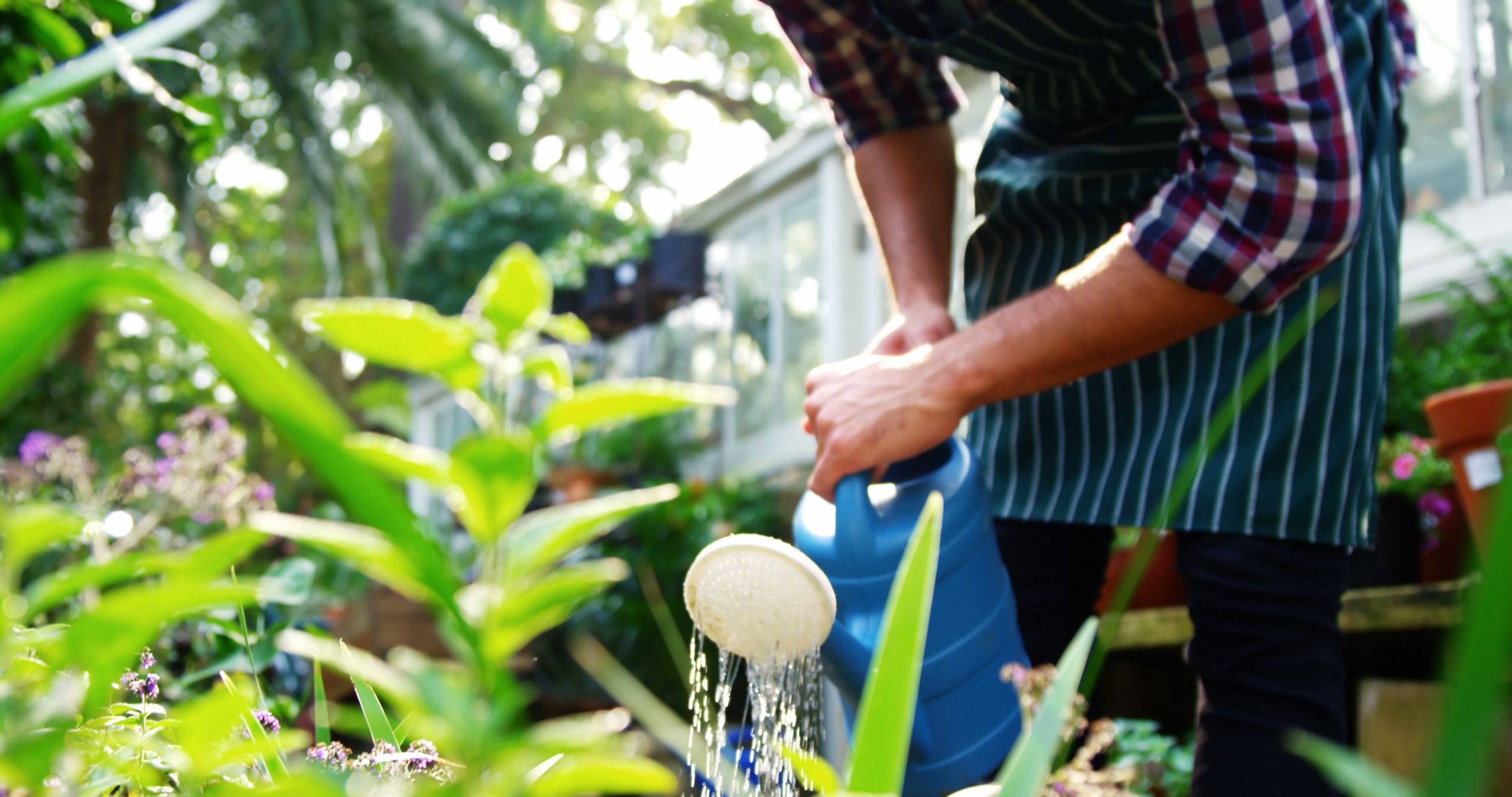
- Overwatering or Underwatering: Plants need the right amount of water to thrive. Too much or too little can stress them out. Picture this: you’re at a buffet, but instead of enjoying a balanced meal, you either stuff yourself silly or starve. Neither is good for you, and the same goes for your plants!
- Poor Soil Quality: Without nutrient-rich soil, plants struggle to grow. Imagine trying to build a sandcastle with dry, crumbly sand – it just won't hold up. Similarly, plants can't thrive in poor soil.
- Wrong Plant, Wrong Place: Not all plants thrive in the same conditions. Sun-loving plants won’t do well in the shade, and vice versa. It’s like trying to sunbathe in a closet – not gonna work!
- Pests and Diseases: These can wreak havoc on your garden if not properly managed. Think of them as the garden’s equivalent of pesky party crashers.
But guess what? Every gardener has made these mistakes at some point. The key is to learn from them and keep going.
I’ve got your back, I will elaborate on these common reasons later on.
Why Should You Start Urban Gardening?
Have you ever wondered what it would be like to have a green oasis in the middle of the city? Urban gardening is more than just a hobby; it’s a way to bring nature into your life, even in the smallest spaces.
Plus, it has amazing benefits – it’s relaxing, it’s good for the environment, and it can even save you money on groceries. Imagine picking fresh herbs or vegetables right from your own garden. Sounds amazing, right?
Getting Started: The Basics of Urban Gardening 
Step 1: Planning Your Space
First things first before you start planting, take some time to plan. Observe how much sunlight different parts of your garden get.
Look around your living space. Where can you start your garden? Do you have a balcony, a rooftop, a windowsill, or even a tiny patch of land? Don’t worry if you don’t have much space; urban gardening is all about creativity and making the most of what you have.
Pro tip: Most vegetables and herbs need at least 6 hours of sunlight daily.
Windowsill Wonders
If you only have a windowsill, you can still grow a variety of plants. Herbs like basil, mint, and parsley do well on windowsills. They don’t need a lot of space, and they love sunlight.
Balcony Beauties
If you have a balcony, your options expand significantly. You can grow vegetables like tomatoes, peppers, and even small fruit trees. Use pots, hanging baskets, and vertical planters to maximize your space.
Step 2: Choose the Right Plants
Not all plants are created equal, especially when it comes to urban gardening. Choose plants that are suitable for your specific environment.
When Starting with Seeds
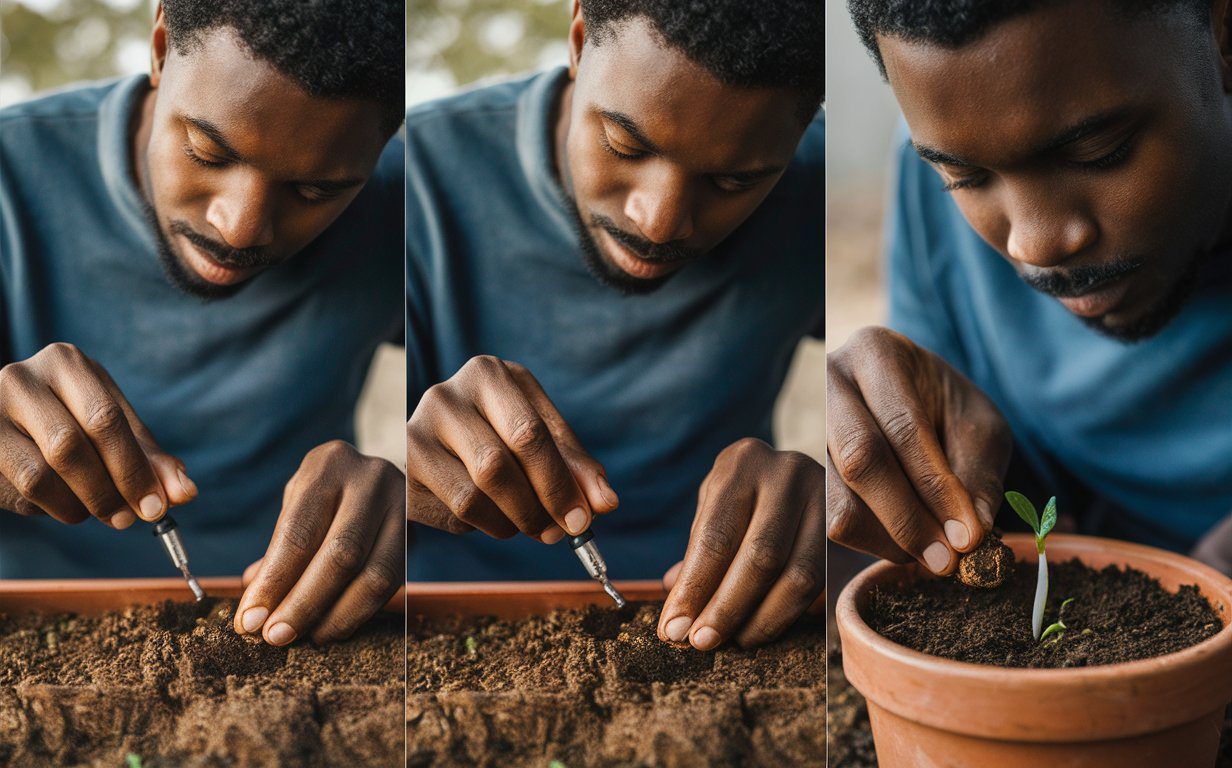
Planting seeds can be a magical process. Here’s a simple guide:
- Choosing Your Seeds: Select seeds that are suitable for your climate and the space you have available. Consider fast-growing varieties like lettuce, radishes, and herbs if you want quick results. Make sure to read the seed packets for specific planting instructions.
- Preparing the Soil: Fill your pots or containers with high-quality potting soil. Lightly moisten the soil before planting to ensure it’s evenly damp but not soggy.
- Planting the Seeds: Follow the instructions on the seed packet for planting depth and spacing. As a general rule, plant seeds at a depth of two to three times their diameter. Make small holes in the soil with your finger or a pencil, place the seeds in the holes, and cover them lightly with soil.
- Planting Depth: A good rule of thumb is to plant seeds at a depth twice their size. Imagine tucking them in snugly but not too deep.
- Watering and Caring for Seedlings: Gently water the soil after planting, being careful not to wash away the seeds. Keep the soil consistently moist but not waterlogged. As the seedlings emerge, make sure they get plenty of light. If they start to stretch and become leggy, they may need more light.
When Starting with Cuttings
Planting cuttings is a great way to propagate plants and expand your garden. It’s a cost-effective method and can be very rewarding.
Some plants, like basil and mint, can be grown from cuttings. Here's how:
- Choosing the Right Cuttings: Select healthy, non-flowering stems from the parent plant. Cut a 4-6 inch section just below a leaf node (the point where a leaf attaches to the stem). Make sure the cutting has a few leaves but not too many, as this can stress the plant.
- Preparing the Cuttings: Remove the lower leaves from the cutting, leaving a few at the top. Dip the cut end into rooting hormone powder to encourage root growth, though this step is optional.
- Planting the Cuttings: Fill a small pot with a mixture of potting soil and perlite or sand to improve drainage. Make a hole in the soil with a pencil, insert the cutting, and firm the soil around it. Water the cutting lightly. If in water, wait until roots form before transferring to soil.
- Caring for Cuttings: Place the pot in a warm, bright location, but out of direct sunlight. Keep the soil consistently moist but not waterlogged. You can cover the pot with a plastic bag to create a mini greenhouse, which helps retain humidity. In a few weeks, you should see new growth, indicating that roots have formed.
The Seedling Surprise
One spring, I planted tomato seeds with great expectations. Days turned into weeks, and nothing happened.
Just when I was about to give up, tiny green shoots peeked through the soil. It felt like discovering hidden treasure! Gardening teaches patience and rewards you with delightful surprises.
Flowers for Color
Don’t forget to add some flowers! They’ll bring color and life to your space. Marigolds, petunias, and pansies are excellent choices for urban gardens.
Step 3: Gather Your Supplies
Now that you know where you’ll garden and what you’ll plant, it’s time to gather your supplies. Here’s a basic list to get you started:
- Pots and containers: Choose ones with good drainage.
- Potting soil: Get high-quality soil to ensure your plants thrive.
- Watering can: A small one is fine for indoor plants.
- Fertilizer: Use organic fertilizer to keep your plants healthy.
- Garden tools: A small trowel and pruning shears are usually enough.
Step 4: Planting Your Garden
It’s time to get your hands dirty! Follow these steps to plant your garden:
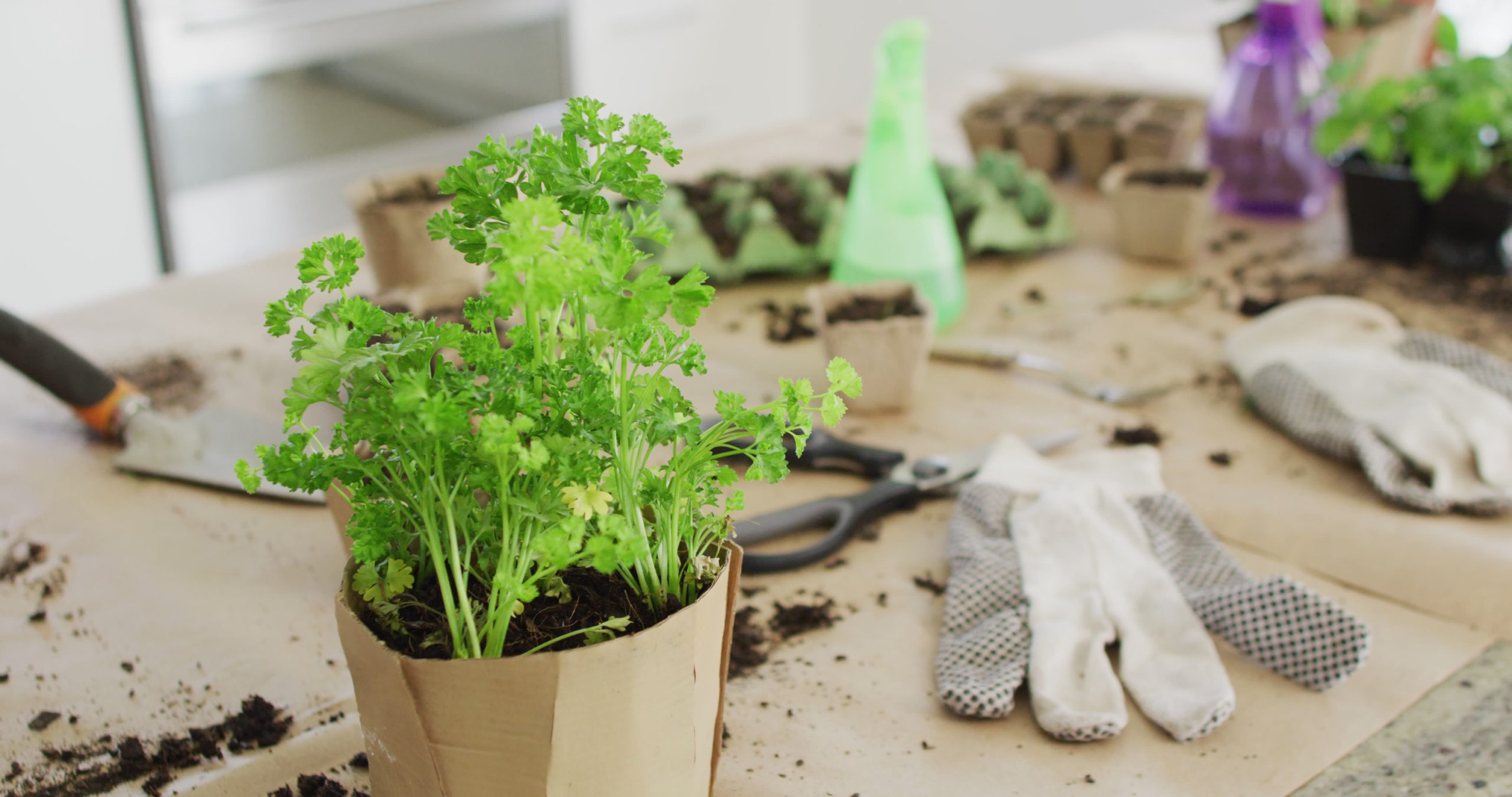
- Prepare the soil: Fill your pots with potting soil, leaving a bit of space at the top
- Plant your seeds or seedlings: Make small holes in the soil and place your seeds or seedlings in them.
- Water your plants: Give your plants a good drink of water, but don’t overdo it. Too much water can drown them.
- Place your pots: Put your pots in a sunny spot. Most plants need at least 6 hours of sunlight a day.
Herbs and Small Vegetables
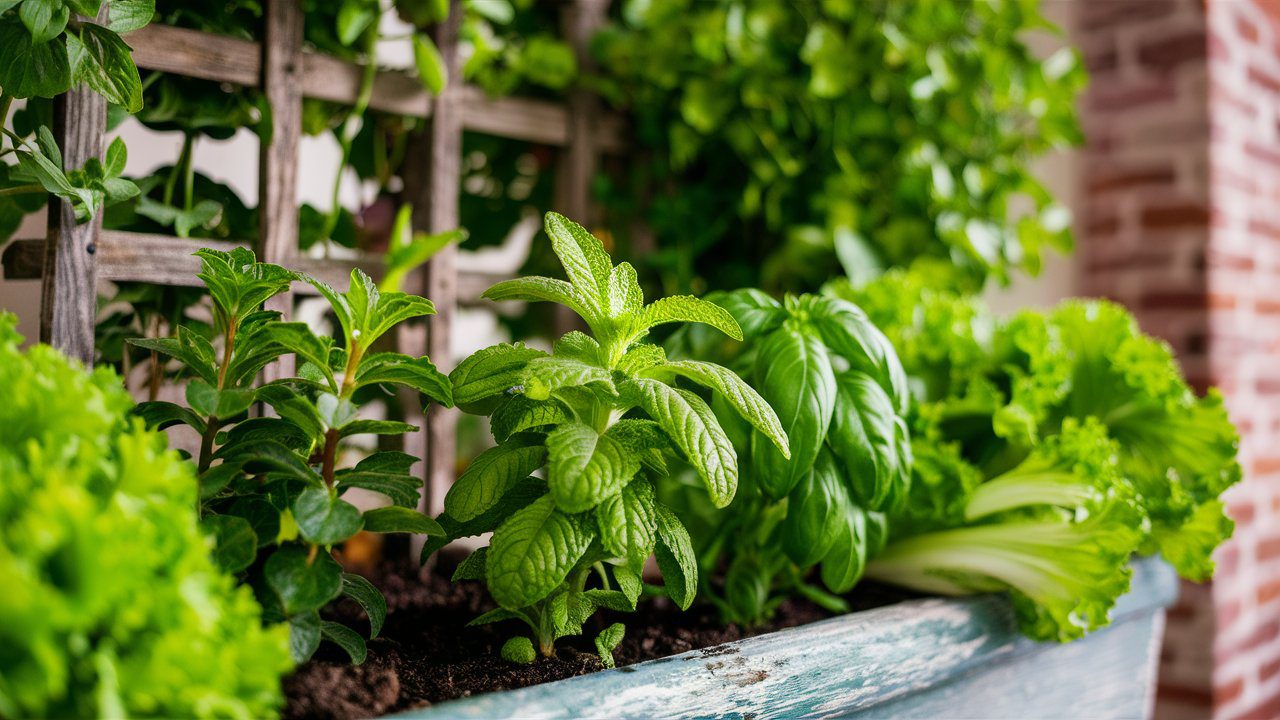
Perfect Choices for Urban Gardens
Herbs and small vegetables are ideal for urban gardens because they don't need a lot of space. Plus, they’re super rewarding. Imagine stepping out to your balcony or backyard and picking fresh basil for your pizza or juicy cherry tomatoes for your salad!
Easy-to-Grow Options
- Basil: Great for beginners. Just give it plenty of sunlight. Perfect for adding a fresh kick to your dishes.
- Mint: Grows like a weed, but be careful – it can take over your garden! Great for mojitos and fresh breath.
- Lettuce: Fast-growing and perfect for salads. You’ll feel like a gourmet chef plucking leaves for your Caesar salad.
- Radishes: Ready to harvest in just a few weeks. They add a nice crunch to your dishes.
My Mint Madness
I once planted mint in a tiny corner of my garden, thinking it would be a nice little addition. Fast forward a few months, and my garden looked like a mint invasion. It had taken over almost every inch of space.
While I never ran out of mint for my teas and salads, I learned a valuable lesson: always plant mint in containers unless you want it to rule your garden!
The Importance of Having Great Soil
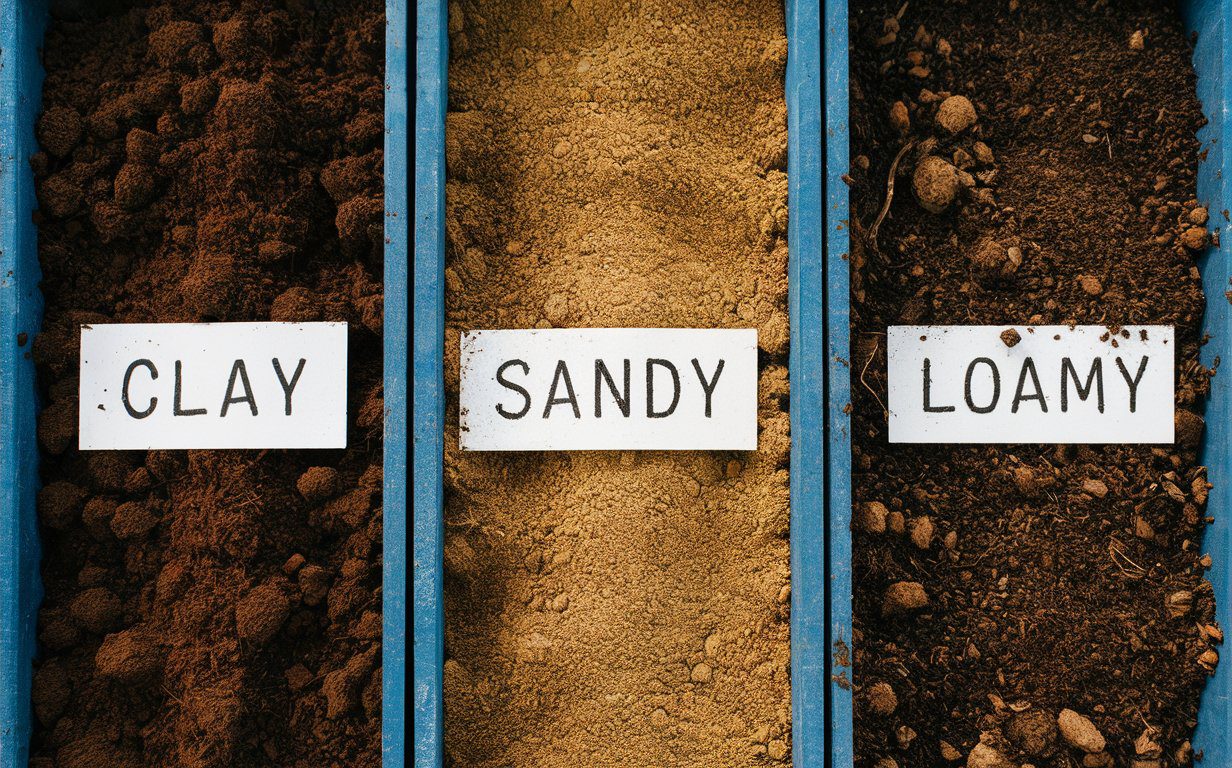
Think of soil as the foundation of your garden. Just like a house needs a solid base to stand on, plants need nutrient-rich soil to thrive. Poor soil can be too sandy, too clayey, or just lacking in nutrients, making it tough for plants to grow strong.
Having great soil is crucial for the success of your urban garden. Here’s why:
- Nutrient Supply: Good soil is rich in nutrients that plants need to grow. Nitrogen, phosphorus, and potassium are the primary nutrients, but plants also need trace elements like calcium, magnesium, and iron. Using high-quality potting soil ensures your plants have access to all the nutrients they need.
- Water Retention and Drainage: The right soil holds enough water to keep your plants hydrated but also drains well to prevent waterlogging. Soil that is too dense can lead to root rot, while soil that drains too quickly can leave your plants thirsty. A good potting mix balances these needs.
- Structure and Aeration: Soil structure is important for root growth. Healthy soil is loose and crumbly, allowing roots to spread easily and access oxygen. Compacted soil can hinder root development and limit your plants’ growth.
- pH Levels: The pH level of your soil affects nutrient availability. Most plants prefer slightly acidic to neutral soil (pH 6.0-7.0). Test your soil’s pH and adjust it if necessary by adding lime to raise the pH or sulfur to lower it.
How to Improve Your Soil
- Test Your Soil: Get a soil testing kit from your local garden center. This will tell you what your soil is missing. It’s like going for a health check-up but for your garden. Once you know what’s lacking, you can give it the right supplements.
- Add Organic Matter: Compost, aged manure, and leaf mold can work wonders in improving soil structure and fertility. Think of it as adding vitamins to your garden’s diet.
- Mulch, Mulch, Mulch: Mulching helps retain moisture, reduce weeds, and add nutrients to the soil as it breaks down. It’s like giving your garden a cozy, nutrient-rich blanket.
A Little Story on Soil
When I first started gardening, I thought all soil was the same. Boy, was I wrong! My first batch of plants looked like they had seen a ghost – pale and droopy.
After a bit of research (and a lot of trial and error), I realized my soil was as nutritious as a cardboard pizza. Adding compost turned things around, and my plants started thriving. Lesson learned: never underestimate the power of good soil!
Caring for Your Urban Garden 
Watering Wisely
Watering is crucial for your garden’s success. But how much is too much or too little? As a general rule, check the soil. If the top inch is dry, it’s time to water. Be careful not to overwater, as this can lead to root rot.
Sometimes you might also need to check beyond the top inch if you have a poor soil.
Pro Tip: Self-Watering Systems
If you’re forgetful or have a busy schedule, consider using self-watering pots or creating a simple self-watering system. It’ll keep your plants happy even when you’re not around.
Feeding Your Plants
Just like us, plants need food to grow. Use organic fertilizers to provide the necessary nutrients. Follow the instructions on the package, and don’t over-fertilize, as this can harm your plants.
The Fertilizer Fiasco
Early in my gardening journey, I thought giving my plants extra fertilizer would make them grow faster. Instead, they ended up with burnt leaves and stunted growth. Lesson learned: more isn’t always better. Stick to the guidelines, and your plants will thank you.
Pruning and Harvesting
Regular pruning helps plants grow better and stay healthy. Remove dead or yellowing leaves, and trim back overgrown parts. When it’s time to harvest, do it regularly to encourage more growth. For herbs, snip off the top leaves to keep them bushy.
How Much Food Do My Plants Need? 
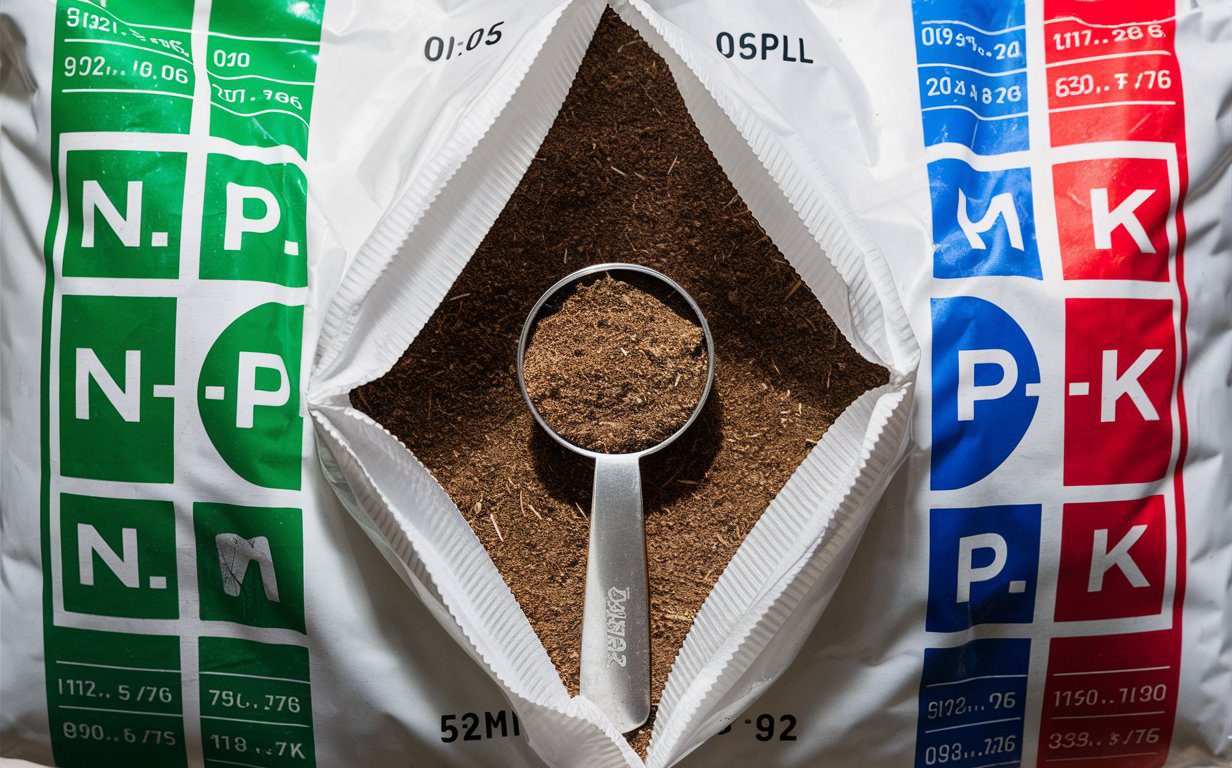
Plants, like people, need food to grow strong and healthy. Fertilizers provide essential nutrients like nitrogen (N), phosphorus (P), and potassium (K).
Feeding your plants the right amount of food is crucial for their health and growth. Too little fertilizer can lead to poor growth, while too much can harm your plants. Here’s how to get it right:
Understanding Fertilizer Labels
Fertilizers come with three numbers on the label, representing the ratio of nitrogen (N), phosphorus (P), and potassium (K). These are the primary nutrients plants need. For example, a 10-10-10 fertilizer contains 10% of each nutrient.
Choosing the Right Fertilizer
Different plants have different nutrient needs. Leafy greens like lettuce and spinach benefit from higher nitrogen levels, while flowering and fruiting plants like tomatoes and peppers need more phosphorus and potassium.
Use a balanced fertilizer or one specifically formulated for your type of plants.
How Often to Fertilize
For most plants, fertilize every 2-4 weeks during the growing season. Follow the instructions on the fertilizer package for the correct dosage. Over-fertilizing can burn your plants, so it’s better to err on the side of caution.
Organic vs. Synthetic Fertilizers
Organic fertilizers, such as compost, manure, and fish emulsion, release nutrients slowly and improve soil health over time.
Synthetic fertilizers provide a quick nutrient boost but don’t improve soil structure. Both have their place in gardening, so choose what works best for your garden.
Pro tip: Organic options like compost and fish emulsion are great choices for urban gardens. They’re the equivalent of a balanced, healthy diet.
Why is it Important to Know Your Hardiness Zone for Gardening? 
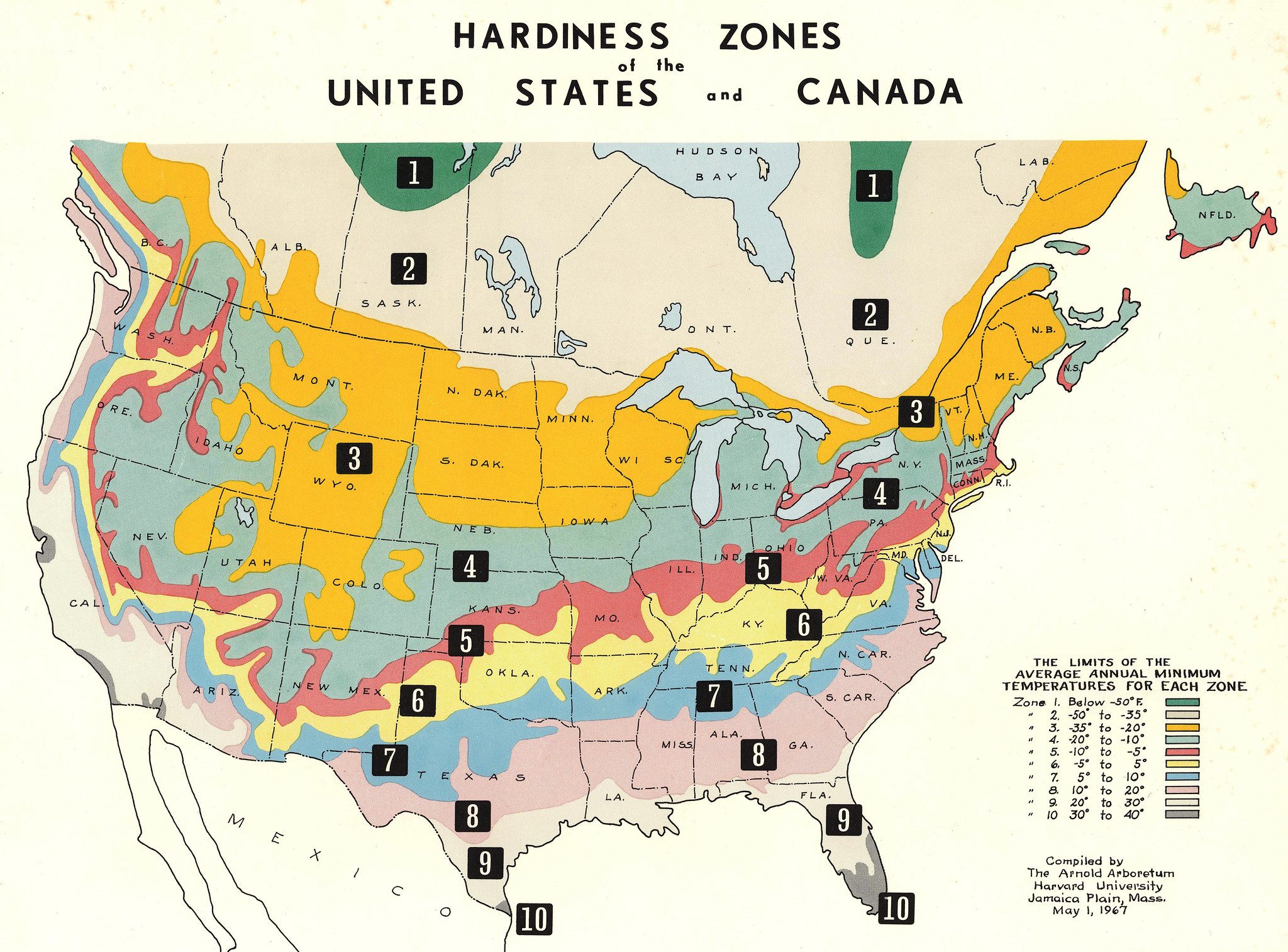
What is a Hardiness Zone?
A hardiness zone is a geographic area defined by climatic conditions, especially minimum temperatures. Knowing your zone helps you choose plants that will thrive in your environment.
How to Find Your Zone
If you’re not familiar with your growing zone, you can check the USDA (United States Department of Agriculture) Map. And if you need step by step guideline understanding the map, you can check CNET article by Molly Price.
Benefits of Knowing Your Zone
Understanding your hardiness zone is essential for successful gardening. The hardiness zone indicates the climate conditions in your area, particularly the lowest temperatures you can expect. Here’s why it matters:
- Choosing the Right Plants: Knowing your hardiness zone helps you select plants that will thrive in your climate. Plants that are not suited to your zone may struggle to grow, even with the best care. Use the USDA Hardiness Zone Map to find your zone and choose plants accordingly. Ensures you pick plants that can survive your climate - It’s like dressing appropriately for the weather.
- Timing Your Planting: The hardiness zone also affects when you should plant your garden. Planting too early or too late can expose your plants to extreme temperatures. Use your zone information to plan your planting schedule, ensuring your plants have the best chance to grow and produce. In essence, it helps you know the best times to plant and harvest. It’s like having a gardening calendar tailored to your location.
- Protecting Your Plants: If you know your hardiness zone, you can take steps to protect your plants during extreme weather. For example, in colder zones, you might need to bring potted plants indoors during winter or use frost blankets to protect them. In hotter zones, providing shade and extra water can help your plants survive the heat.
Zone Zest
When I moved to a new city, I eagerly planted my favorite flowers from my previous home. To my dismay, they withered in the first cold snap.
That’s when I discovered the importance of hardiness zones. Now, I always check the zone before planting, ensuring my garden thrives year-round.
Troubleshooting Common Problems 
Pests
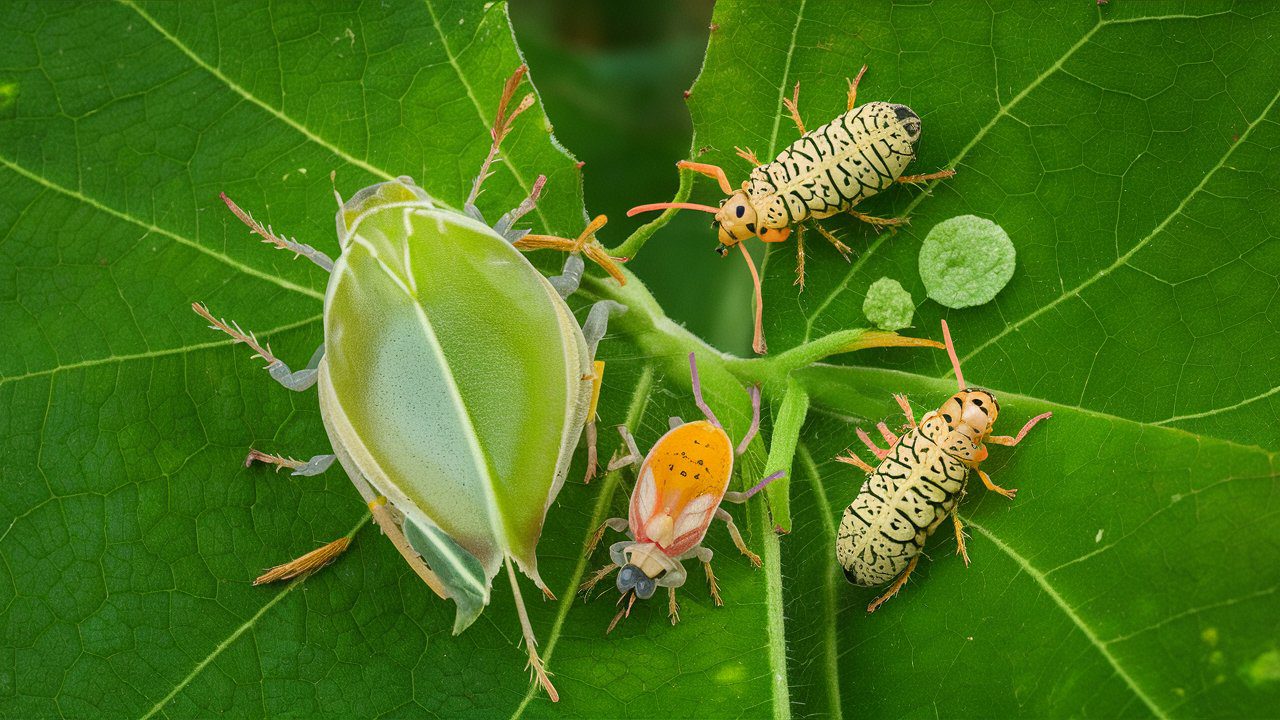
Urban gardens are not immune to pests. Aphids, spider mites, and caterpillars can be a problem. Use natural pest control methods like neem oil or introduce beneficial insects like ladybugs to keep the pests at bay.
Diseases
Fungal diseases can affect your plants, especially in humid conditions. Ensure good air circulation and avoid overwatering. If you notice signs of disease, remove the affected parts immediately.
Not Enough Sunlight
If your garden doesn’t get enough sunlight, consider using grow lights. They mimic natural sunlight and can help your plants thrive indoors.
The Joy of Urban Gardening: Reaping the Benefits 
Fresh and Healthy Food
One of the best parts of urban gardening is the fresh produce. Imagine making a salad with tomatoes and lettuce you grew yourself. It’s not only healthier but also incredibly satisfying.
Stress Relief
Gardening is a fantastic way to reduce stress. The act of caring for plants and being in touch with nature can be very therapeutic. Plus, it gives you a break from screens and the hustle and bustle of city life.
Environmental Impact
By growing your own plants, you’re contributing to a greener planet. Plants absorb carbon dioxide and release oxygen, improving the air quality around you. Plus, you’re reducing your carbon footprint by not buying produce that has traveled miles to get to your plate.
Ready, Set, Garden! 
Urban gardening might seem daunting at first, but with a bit of planning and some love for plants, you’ll soon find it’s an incredibly rewarding hobby. Whether you have a tiny windowsill or a spacious balcony, there’s always a way to bring a little green into your urban life.
Don’t Give Up - Your Garden is Worth It!
Remember, even the best gardeners face setbacks. Each failed attempt is a learning opportunity. So, grab your gloves, dig into that soil, and start planting. Your urban garden adventure awaits!
And hey, if all else fails, you’ll at least have some great stories to tell (and maybe a funny anecdote about the time you accidentally grew a forest of mint in your living room).
The Joy of Success
One of my proudest moments was harvesting my first batch of homegrown tomatoes. The flavor was beyond anything store-bought, and the satisfaction of nurturing them from seeds was immense. Every gardener has a story of triumph – yours is just waiting to be written.
So grab your pots, pick your plants, and let’s get growing! Who knows, you might just inspire your neighbors to start their own urban garden too.
I’d love to hear about your urban gardening adventures! Share your stories, challenges, and tips. And remember, every garden starts with a single seed. Happy gardening!

